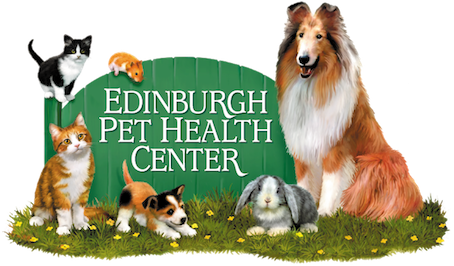Food allergy dermatitis
(Food Hypersensitivity, Adverse Food Reaction, Food Intolerance)
A pet can develop an allergy to a food ingredient at any time during her/his life. Most commonly the food allergy develops when the pet is young. Even if the pet has been eating the same food for years, a problem could develop. Food allergies typically cause skin problems in pets. When the pet eats certain food ingredients, its immune system over-reacts to the food and causes a reaction on the skin which will in turn cause the pet to become itchy or develop a skin infection. If a pet’s skin is itchy, he/she may lick excessively, chew at the area, or scratch at the skin. Some pets that have repeated ear infections actually have food allergies. Pets that need their anal glands regularly expressed often have an allergy to a food ingredient. The only way to know if your pet has a food allergy is to do a food trial There is no simple, accurate blood test to determine which ingredients bother your pet.
Food Trial Frequently Asked Questions
What is a food trial?
A food trial is a diagnostic test that is performed to see which food ingredients cause your pet to react. You perform this test at home! You will have to feed your pet a prescription food for 8-10 weeks. During this time, you have to be very strict with what you allow your pet to eat. We suggest switching your pet over to the prescription food by slowly adding it to the current diet until she/he is eating just the new food (usually takes 1 week).
What if I have other pets that are eating different food?
It is often easiest to feed all the pets in the house the prescription food. If the allergic pet can’t get to any other food, it will make it less likely that he/she will eat the wrong things. If you are unable to feed all the pets in the household the same food, you will need to feed them separately and pick up all extra food before letting the pets run free in the house again. This also means making sure the pets don’t get into each other’s stool or vomit!
Can my pet have treats?
You may give your pet some of the prescription food as a treat (some foods come as both dry and canned). Or, you may give special limited ingredient treats. Sometimes, fruits and veggies can be used as treats. Please ask which ones are safe.
Can I feed a less expensive food from the pet store or grocery store?
Most over the counter (OTC) pet foods are not suited to be used during a food trial (even though some claim that they have limited or novel ingredients). Each food has to be analyzed carefully to make sure that there aren’t any ingredients that could potentially cause an allergy in your pet.
What do I need to avoid giving my pet during the food trial?
Flavored medications (this includes some heartworm preventives for dogs), flavored toothpaste, wildlife from the yard, access to the stool or vomit of other pets in the household, treats, rawhides, table food (with the exception of some fruits/veggies).
What changes can I expect to see in my pet during the food trial?
Within the first couple of weeks, you may begin to notice that your pet is more comfortable (scratching or licking less). If your pet’s problem is not related to a food ingredient (or she/he accidentally gets into some “off-limits” food), you may see no improvement. It is important to continue to feed the prescription food because complete improvement may take 10 weeks.
What will happen at the end of the 8-10 week food trial?
If your pet is doing much better on the prescription food, we will have you add in different food ingredients one at a time. Each ingredient will be given for about 2 weeks. If there are no problems with the new food ingredient after 2 weeks, a different ingredient can be added. It is only by adding things one at a time that we will be able to find out exactly what your pet is allergic to. If it becomes too difficult for you to add ingredients one at a time, we could simply have you switch back to the pet’s original diet. If your pet starts developing skin problems again, we will know it is due to a food ingredient.
Will my pet ever be able to eat regular pet food again?
Maybe. If we find out at the end of the food trial that there has been no change in your pet, he/she might be able to eat a regular diet again. Or, if we find the specific ingredient that is making your pet sick, we may be able to find a non-prescription (OTC) food that does not have that ingredient.
